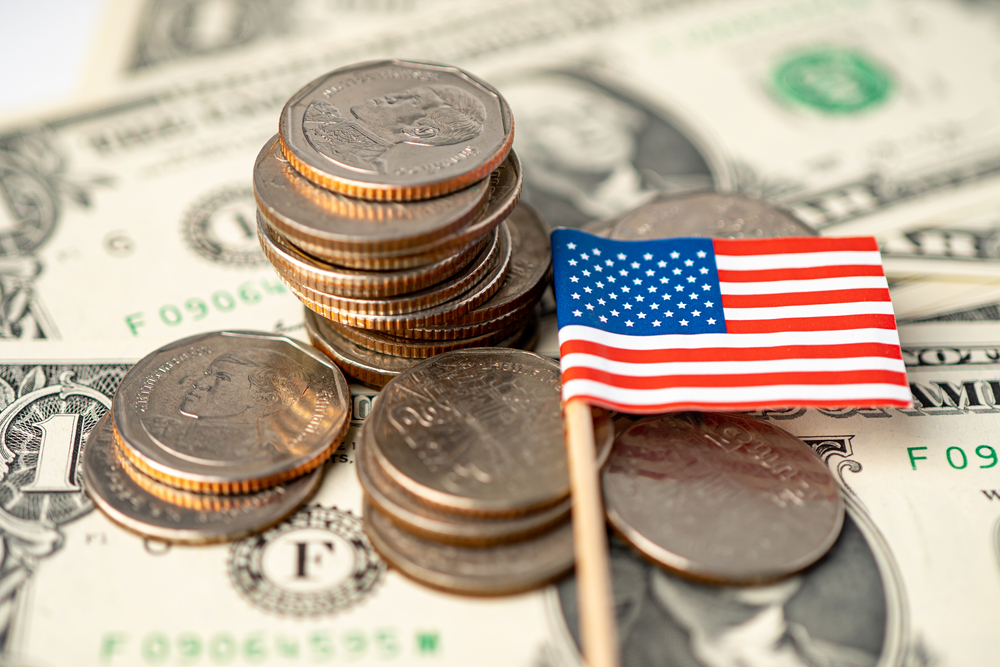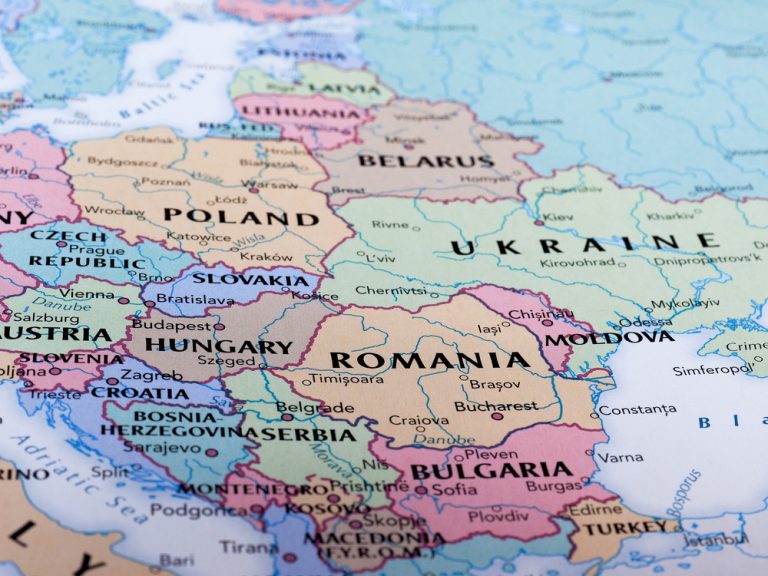
U.S. between the threat of default, banking crisis and farewell to the energy shale dream
The year 2022 was a very difficult one for U.S. citizens, and society was filled with the most negative expectations for the country’s future. To lighten the mood before the New Year, President Joe Biden said that the data on changes in consumer spending and income of Americans are good signals for society and the national economy. Nevertheless, back on December 12, U.S. secretary of the treasury Janet Yellen said about the risk of recession in the U.S. economy in 2023. At that time she expressed cautious optimism and said that inflation in 2023 would be much lower compared to 2022, but that “there should be no unforeseen shock”. Alas, but as the beginning of 2023 has shown, Americans are facing stress and shocks on all fronts. It is likely that the country faces not only a recession, but also a default, a banking crisis and energy difficulties. However, we should talk about everything in order.
First of all, it is necessary to answer the question of how the U.S. economy found itself on the verge of a technical default. At this point, the U.S. government has four months to run out of money and the country will have to declare shameful bankruptcy. However, none of the country’s leading political forces is willing to make concessions to avoid this. Negotiations between Congress and the White House over raising the debt ceiling, which could have delayed the default, are at an impasse and no compromise has been seen yet. The White House calls the Republican position of refusing to raise the debt ceiling “holding the country hostage,” while Republicans demand Biden to cut government spending and use the debt ceiling issue as leverage in budget disputes.
However, this conflict is not just about local disagreements and blackmail. Republicans are well aware that an economic collapse would fatally damage Joe Biden and the entire Democratic Party before the elections in 2024. Also, many of them are isolationists who see a default as an inevitable reset for the U.S. economy that must happen as early as possible to give the country a quicker stimulus to recover. That’s why a situation where the U.S. fails to raise the national debt ceiling before June and default becomes a reality is not such a fairy tale. It will almost certainly lead to a crash in stock markets and plunge the whole world into a new financial crisis. The USA, on the other hand, will face a collapse of the economy and a sharp rise in unemployment. At the same time, even from a tactical point of view, neither Republicans nor Democrats are willing to cut key areas of budget spending, such as social services or national defense. Republicans are mostly focused on cutting various small things like international aid to other countries, but these are only tens of billions of dollars, while the budget deficit is over a trillion. The situation is exacerbated by the soaring cost of servicing U.S. government debt: the rate on short-term U.S. Treasury bills is already over 5%. This year, up to a third of the U.S. budget, close to $1.5 trillion, could go just to pay interest on the debt. Therefore, sooner or later the U.S. Federal Reserve System (the Fed) will have to lower interest rates again, the increase of which has had such a positive effect on the decline in inflation, and start the printing press. Only this will mitigate the effects of the debt crisis threatening the world, which could cover not only the U.S., but also many other economies. However, ordinary Americans will have to pay for this bailout, just as in 2008, even if default is miraculously avoided.

A peculiar detector of impending problems is also the American banking sector, which is right now in a state of turbulence. One of the largest banks in the U.S., Silicon Valley Bank, faced a shortage of funds due to the outflow of customers and the fall of the bond market. Now it has to sell its stocks and get rid of U.S. Treasuries, just to avoid collapse. Silicon Valley Bank is the 18th largest U.S. bank by assets. It is America’s largest venture capital investor, investing in many IT and medical startups. In recent years, SVB has made huge money from the growth of the IT sector and the cryptocurrency market. But then, in a familiar pattern from 2008, the IT bubble began to deflate. Then the bank invested its super profits in bonds, hoping to survive the fall of the stock market and cryptocurrencies. But now bonds have become a problem as well, as the Fed keeps raising rates, and as a result, yields on these securities are rising, while their value continues to fall.
The U.S. financial regulator estimates that U.S. banks have already lost $620 billion on bonds. The situation is exacerbated by the outflow of customers’ money, as they are now looking for more favorable conditions on deposits with maximum yield. Major U.S. banks are now losing $200 billion each quarter due to declining deposits. For these and other reasons, shares of SVB, for example, collapsed by 60% in February, and another cryptocurrency bank, Silvergate Bank, went bankrupt at the end of last month. And after that, there are reasonable fears that a domino effect will be triggered and other banks will also face financial turmoil. The Fed will raise its key rate above 5% by summer, and some expect it to rise to 6%. All of this can lead to a debt crisis, because more and more money is spent on servicing state, municipal and corporate debts. But now the banks’ problems have worsened, which could lead to a repeat of 2008. The trigger for such an event could be the uncontrolled collapse of any major bank.
On March 10, the first bankruptcy of a major bank since 2008 occurred in the U.S.: California financial regulators announced the closure of the Silicon Valley Bank. Attempts by Silicon Valley Bank in two days to urgently find capital to be able to pay obligations to its customers, ended in failure. SVB has more than $200 billion in assets and $170 billion in deposits, most of which were not insured. Now that money could be irretrievably lost to the depositors. Finally, the bank was seriously affected by the collapse of the IT and cryptocurrency bubble, and a desperate attempt to invest in government bonds amid the Fed’s monetary policy finally failed. Clients hastily began withdrawing money from the bank, and eventually the symbol of Silicon Valley’s venture capital business went bankrupt in the most humiliating way. American financiers compare the collapse of SVB with Bear Stearns in early 2008. Bear Stearns collapsed because of the collapse in the mortgage market. SVB was hit because of the general stalemate in the financial markets, where stocks, bonds and cryptocurrencies have all been stagnant or falling for more than a year. In 2008, Bear Stearns became the “canary in the mine” and was followed by the collapse of Lehman Brothers and the start of the global financial crisis. Now the financial regulators will do whatever they can to prevent a repeat of that scenario. However, the longer the key rate in the U.S. will grow on the background of inflation, the higher the probability of the first banking crisis in America in 15 years.
There is no doubt that the collapse of Silicon Valley Bank really threatens to cause a cascading effect of collapse of other banks as well. Some action is expected from the U.S. financial authorities, and again there is talk of implementing the Paulson Plan in the style of 2008. The debts of SVB to its clients exceed $170 billion. 93% of them were uninsured, which means that about the same proportion of customers will lose their money unless the government comes up with some scheme to quickly compensate part of their losses. The bankruptcy of SVB happened against the background of the largest flight of bank capital in modern history. Over the last few days before the collapse, more than $40 billion was withdrawn from SVB, but not everyone managed to do so, and a lot of IT and cryptocurrency startups have billions of dollars stuck in the bank’s accounts. The current crisis situation is compared not only to 2008, but also to the mass bankruptcy of savings banks in the U.S. in the late 80s. It was also caused by a rise in the key rate and a lack of liquidity in the markets. Now, as then, it is not the Wall Street giants that may suffer, as the government protects them, but many small regional banks. Meanwhile, Republicans in Congress are threatening to block any possible bank bailout plan. For them, it is a matter of principle, because they do not want to save the main bank of Silicon Valley, which is an ally of the Democratic Party. However, the longer Washington delays, the greater the risk of a massive banking crisis in the U.S., where millions of Americans are already at risk of losing their savings.
Against the backdrop of these public fears, the press is filled with depressing details about the last months of Silicon Valley Bank’s operations. For nearly a year, and up until bankruptcy, the bank had no director of risk assessment at all. Instead, SVB was busy actively promoting the LGBTQ+ agenda with a month-long “rainbow campaign” and “lesbian visibility days.” Rating agencies and financial regulators, as in 2008, “accidentally” failed to assess the deplorable situation of the bank and did not raise the alarm until late February, when even many independent insiders realized that SVB was one step away from bankruptcy. Moreover, the bank management, knowing about a deplorable condition of its brainchild, had time to sell its assets in advance insuring themselves and not caring about customers. The first to feel the effect of SVB bankruptcy were the California companies. Not only IT start-ups, but also, for example, winemakers, which were also closely connected to SVB. Film crews in Hollywood began to have payroll disruptions as they, too, conducted operations through SVB.

Problems arose not only in the U.S., but in many other countries as well. Startups in Britain and the Nordic countries were short 30 billion pounds which were stored in SVB. The Bank of England has to urgently compensate them at least part of what was lost to prevent an avalanche of bankruptcies. 500 Israeli startups were also on the verge of bankruptcy. Customers in a panic began to withdraw money en masse from other regional banks, which, like SVB, actively invested in bonds and mortgage securities. Now this could lead to the fall of another California bank – First Republic Bank, with assets under $200 billion, and the New York Signature Bank with $115 billion, but they are still trying to save the state. Leading banks are not threatened yet, but a chain reaction of bankruptcies can bury many smaller banks.
However, problems accompany not only the “virtual” banking sector, but also the very tangible oil industry, which is one of the pillars of the U.S. economy and previously gave optimistic signs. And the main difficulty is that the U.S. shale boom, which promised to end dependence on oil exporters, is coming to an end. Oil producers are facing serious problems in the old fields as well, as oil wells in the Permian Basin, where the lion’s share of the U.S. “black gold” is produced, are producing less and less oil.
Moreover, the problems with depletion of oil reserves in the USA are felt in many states at the same time: from South Dakota to Texas and New Mexico Delaware. For example, in Delaware, 10% of the best wells on average produce 15% less oil than they did six years ago. During the decade of the shale boom, the U.S. was able to almost double its oil production, from 7 million bpd in 2009 to 13 million bpd before the pandemic began. But then oil production declined, and so far it has not been able to return to the levels of three years ago.
The reasons for the slow growth of the oil market in the U.S. were many: from the political uncertainty with the departure of Trump and the emergence of Biden, who gives fewer permits for oil production, to the unwillingness of the companies to invest in the development of new fields. Instead, oil company owners spent last year’s excess profits to pay dividends. But now the problem of depletion of the Permian Basin is starting to show. In this situation, if production is maintained at current levels, oil reserves in the U.S. will be sufficient for another 10-20 years. If they try to increase it at a fast pace, these reserves could be depleted in a couple of years. Such a build-up is so far the only way to reduce dependence on exporters such as Iran, Venezuela or Saudi Arabia. After all, politically, all of them are no longer loyal to the U.S., and will not save the U.S. economy with low oil prices. The U.S. is still the world’s leader in oil production, but amid fears about the depletion of oil reserves, investors can begin to withdraw money from the shale industry. And some market participants in the U.S. are even predicting a return to the 70s and 80s, with the growing dominance of OPEC+. It is likely that the U.S. Energy Independence achieved under Trump risks being short-lived. Coupled with high inflation, a financial and banking crisis, as well as declining business activity and an impending recession, the U.S. is in for some tough times. It does not even matter if a technical default happens or not. It could, however, seriously intensify the scale of the tragedy, which will be fully understood by the summer or fall of 2023.


Average Rating